The superlatives about the Grumman Hellcat abound. The F6F was credited with over 5,000 victories in air combat. It was said to dominate the Japanese navy’s Zero fighter a key opponent. Some of its claims for success are amazing. The Hellcat “arrived in the Pacific theater in August 1943 and went to work straight out of the box. The Hellcat immediately challenged what had been the most powerful naval air arm on the planet and beat it like a bongo, racking up by far the highest kill-versus loss ratio of any airplane in American service during World War II (19-to-1).” (Wilkinson, The Goldilocks Fighter, Aviation History, 2014). In trying to assess “how great” examples of early combats of the Hellcat primarily against the Zero fighter are examined. A few later examples primarily examine claims and claims methodology are included.
An obvious question, why limit the principal analysis to early combats? Most combats in 1944 and 1945 do not provide useful examples of the combat quality of the Hellcat versus the Zero. Rather, they are evidence of the serious decline in Japanese navy fighter pilot quality during the period in which the Hellcat and its pilots claimed the most success. To support this approach an addendum surveys the issue.
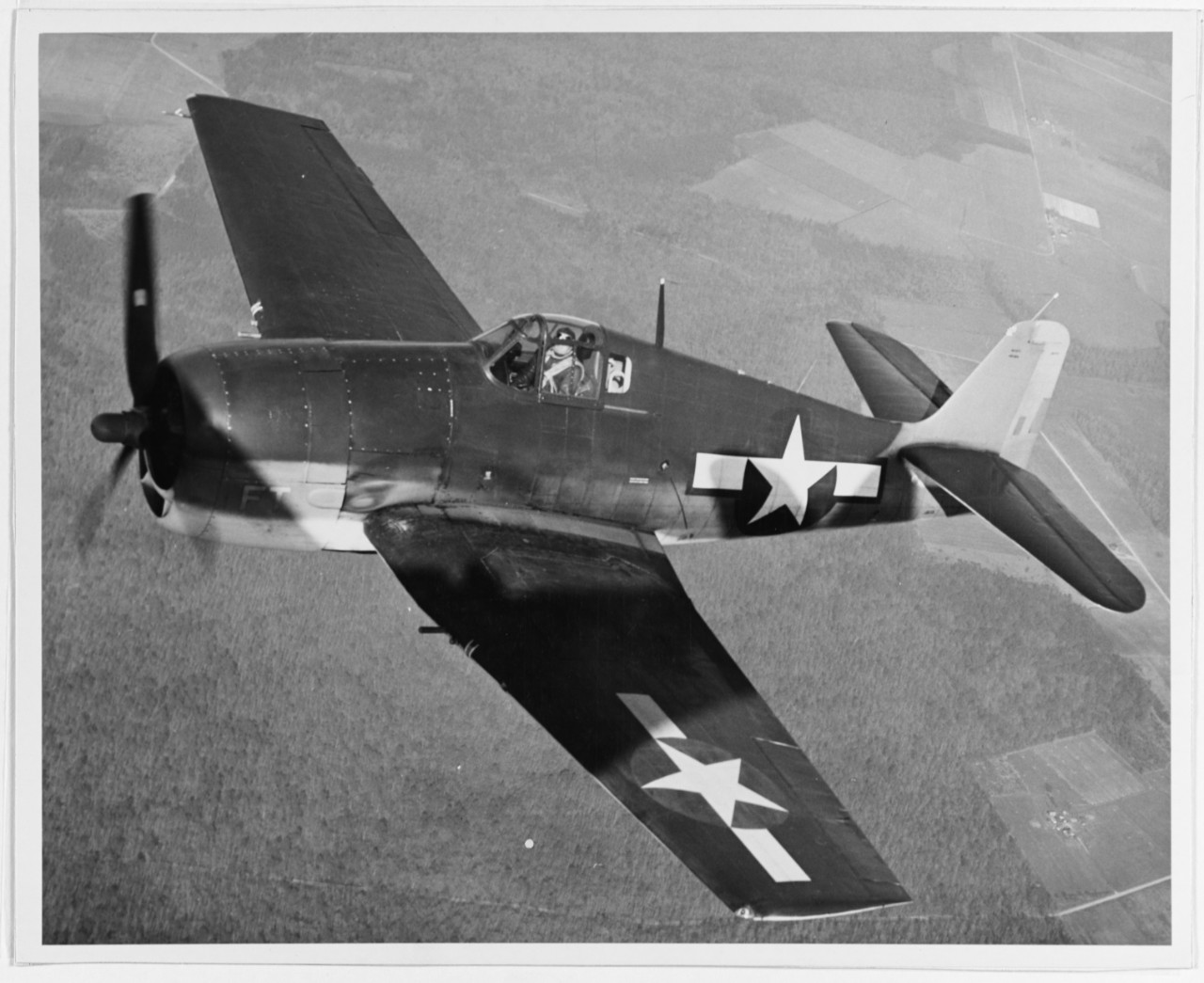
F6F-3 over Patuxent Test Center
The Hellcat Goes to Work
On 1 September 1943 the Grumman Hellcat registered its first aerial victory. Lt. (j.g.) Richard Loesch of carrier based VF-6 shot down a 4-engine flying boat (H6K, Emily) while supporting operations in the vicinity of Baker and Howland Islands. Other shoot downs of flying boats followed, and gun camera imagery brought the first clear pictures of Emily.
The first fighter combat for the F6F, however, occurred between Japanese navy land based Type Zero carrier fighters and land based Hellcats. Fighting Squadron 33 (VF-33) with twenty-four F6F Hellcats and thirty-six pilots arrived on Guadalcanal in late August 1943. Pilots were well trained including twelve with previous combat experience. Although VF-33 was newly commissioned it had a history as the fighter element spin-off from a composite squadron. Familiarization flights included strafing the Japanese seaplane base at Rekata Bay at the end of August the first combat mission flown by Hellcats. VF-33 was soon followed by two smaller squadrons with twelve Hellcats each plus spares, VF-38 and VF-40. The Grumman F4F Wildcat retired from combat operations in the Solomons at the beginning of August. The Hellcats joined dozens of other Allied fighters operating from airfields in the southern and central Solomon Islands: Marine F4U Corsairs, U.S. Army P-38s, P-39s and P-40s, and New Zealand Kittyhawks. Near the end of August 1943 the Japanese navy had about ninety-five Zero fighters operational at Rabaul, New Britain and in the Solomons. They were usually divided between the two areas but could concentrate in one or the other as needed. Hellcats were the F6F-3 version. Zeros (codenamed Zeke by the Allies) were mainly Nakajima built Zero 21’s and Mitsubishi Zero 22’s. A handful of Zero 32’s (Hap/Hamp) were on their last days of service in the area. Japanese army fighters which had seldom appeared over the Solomons were completely occupied in New Guinea during the later months of 1943.
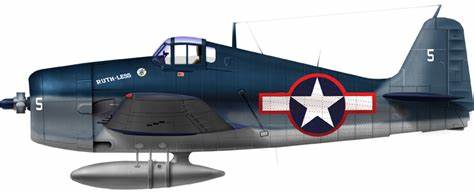
VF-38 Grumman Hellcat
The first Hellcat Zero “kill” came on 6 September when Hellcats of VF-33 escorted TBF’s and P-39s attacking a suspected radar site on Morgusaia Island in the Shortland group. Ens. James Warren fired on a Zero but did not submit a claim since he did not witness the results of his attack. Based on information received later he was awarded a victory. However, as described in South Pacific Air War, p. 392 the information relied upon was incomplete and the purported first Hellcat victory over a Zero was not valid. The first valid claim came three days later when Ens. Harry Cantrell claimed a Zero in a fighter sweep over Ballale and Fauro Islands. His victim was W.O. Tsukasa Kondo of Air Group 201. On the 11th Lt. (j.g.) David Scott claimed a fighter identified as a Tony. Sixteen Hellcats of VF-33 were among the fifty plus Allied fighters that escorted B-24s to bomb Kahili. Scott’s claim is highly questionable to say the least. Not only were no Tonys engaged, but the escorting Allied fighters claimed seven Japanese fighters and bomber gunners added sixteen more. Only one Japanese fighter was shot down. One Hellcat and pilot (Lt. (j.g.) Potter) failed to return from the mission.
September 14th was a big day for the Hellcats. Sixteen F6F’s of VF-33 were joined by twenty-six from VF-38 and VF-40 as part of a series of attacks on Kahili and other targets in the northern Solomons. Over two hundred attackers and escorts took part. VF-33 was the leading light of the day, initially credited with eight Zeros which was later increased to ten. This was more than half the day’s total claims of eighteen. However, actual Japanese losses amounted to five. VF-33’s Lt. Carlos Hildebrandt claimed three victories. Two VF-33 Hellcats were write-offs. One damaged Hellcat ditched on the return flight with its wounded pilot rescued. Another badly damaged fighter flown by a wounded pilot crash landed at Munda. In addition to the Hellcats two P-40s were lost and five Corsairs returned badly damaged. The Japanese carried out retaliatory night bombing attacks on Allied positions after these raids. Six Hellcats were damaged in their attacks including three that were written off as total losses.
September 15th was the second of three days of heavy raids against Japanese airfields on Bougainville and nearby islands. Morning reconnaissance photos showed 42 fighters at Kahili, and forty-one Zeros intercepted fifty-five SBDs and TBFs escorted by seventy-one fighters including forty-two Hellcats. Ten Hellcats from VF-33 clashed with an estimated twenty-five Zeros and claimed four. In separate action Hellcats of VF-38 and VF-40 along with Marine Corsairs also tangled with Zeros bringing the Hellcat total to eight of fourteen victories claimed. VF-33 and VF-38 each lost one Hellcat along with its pilot. Only three Zeros were shot down.
The 16th brought another day of heavy action. Thirty-three F6Fs, twenty-four Corsairs, eight U.S. P-40s and eight New Zealand P-40s escorted fifty-four strike aircraft to Ballale. The Hellcats claimed eight victories but were outscored by the Corsairs claiming eleven. One of the Marine victories (by Maj. Boyington) claimed as a Hap was a VF-38 Hellcat. See South Pacific Air War, pp. 398-400. One Corsair and three Hellcats were lost. Only three Zeros were lost. Four of Boyington’s five “victories” on this day were Haps all without a witness (except for the Hellcat pilot who ditched after seeing a Corsair’s fire damage his oil system). No other pilots in this combat reported a Hap kill or even seeing a Hap. Hellcat pilots were not the only pilots to overclaim or misidentify aircraft.
By the end of September the three Hellcat squadrons in the Solomons claimed 29 kills. Of these VF-33 claimed 21. VF-33 lost two Hellcats and their pilots with two others written off due to damage in combat (one ditched, one crash landed). However, rather than a 5:1 combat ratio the result was an approximate even trade of victory and loss in combat with Zeros. VF-38 and VF-40 lost four Hellcats in combat without counting one shot down by a Corsair.
There was great interest in the first sustained combat and Hellcat fighter to fighter action. At the end of September South Pacific intelligence compiled a report on the VF-33’s first combat tour. THE F6F-3 IN THE SOUTH PACIFIC addressed characteristics and performance of the Hellcat based on action reports and tests with squadron aircraft at the end of its first tour. Additional data was recorded in an Air Operations Memorandum.
Tests after the squadron’s first combat tour found different aircraft performed differently. As explained in the report the average performance figures obtained were not indicative of all aircraft. “The figure of 245 knots at sea level for example, is not the best speed obtained. Several pilots maintained 265 knots with 2700 r.p.m. and 52” M.P. The figure of 20 minutes for climb to 30,000 feet indicated is again only an average; one pilot reached this altitude in 17 ½ minutes.” Some aircraft obtained 360 m.p.h. at 24,500 feet. (versus BuAir standard of 378 m.ph.). Some aircraft obtained 300 m.ph. at sea level only slightly below BuAir standard.
Average performance data from VF-33 tests (full load, no drop tank, 12,299 lbs.) included the following:
Speed (true airspeed m.p.h.) Sea level – 285; 10,000’ – 308; 20,000’ – 325; 24,500’ – 345.
Climbing time from sea level to: 10,000’ – 5 minutes; 20,000’ – 11 minutes; 30,000’ – 20 minutes.
For comparison, official figures per William Green (12,186 lbs.)
Speed – Sea level – 303 m.p.h.; 23,700’ – 373 m.p.h.
Climb -Initial – 3,240 ft./min.; to 15,000’ – 7.7 min.; to 25,000’ – 14 min.
In addition to test results some comparative data was also recorded. “6 pilots with ZEKES on their tails just over the water managed to prevent them from closing the range.” One combat report noted “Hildebrandt’s top speed just over the water was 270 knots pulling 53” of mercury. He found the Hellcat about as fast as the Zekes at that level.” Ens. Fruin reported “I discovered another (Zeke). He was on my tail about 400 feet high. I was doing 260 knots with 2500 r.p.m. and 48” at 20 feet, and he gave up after 5 minutes, during which time he neither gained nor lost.”
The Air Operations Memorandum reported: “On several occasions Hellcats succeeded in turning inside the Zeke. On others, Hellcats were unable to do this. The Zeke could probably always turn in on the F6F, but he doesn’t like to face those six .50’s.” In early 1944 pilots of carrier based VF-16 made similar reports of Hellcats sometimes out turning Zekes. Squadron commander Lt. Cdr. Paul Buie pointed out that any Hellcat out turning a Zeke was based on relative skill of the pilots not on the inherent characteristics of the two aircraft. A VF-40 combat report from October 1943 contained cryptic comments on performance: “Enemy A/C (aircraft) can turn inside F6F-3. F6F-3 can dive away from enemy A/C. ”The memorandum reported: “A Hellcat climbed with a Zeke once. Generally the F6F cannot climb with a Zeke. The Zeke will sometimes dive with a Hellcat, although the F6F has proved it usually can outdive the Zeke.” Another VF-40 report from December 1943 stated “Zekes have a higher rate of climb. Zeke can turn inside F6F-3. F6F-3 can pull away in a dive.”
According to the intelligence study VF-33 pilots considered the Hellcat an excellent aircraft rugged and reliable with the best serviceability rate of any fighter operating in the area. Over a period of several months on average only 62% of Corsairs were serviceable (shades of the current F-35). The report pointed out that VF-33 pilots expected to have continued good hunting on their next combat tour. Presumably pilots considered the claimed 5:1 victory to loss ratio valid.
Readers familiar with popular literature regarding the Hellcat’s success as well as official performance figures may be surprised to see test data from Hellcats in actual operations. Moreover, combat reports while extolling the Hellcat’s ruggedness and effective armament do not suggest any great superiority in flight characteristics compared to the Japanese navy’s Zero. The rough equivalence in performance is reflected in actual combat results as opposed to victory claims and losses. Note – tests results at Patuxent Naval Air Test Center in late 1944 are clearly misleading. The Zero 52 involved in the trials reached a maximum speed of only 335 m.p.h. at 18,000 feet far less than its rated speed at military (not war emergency) power.
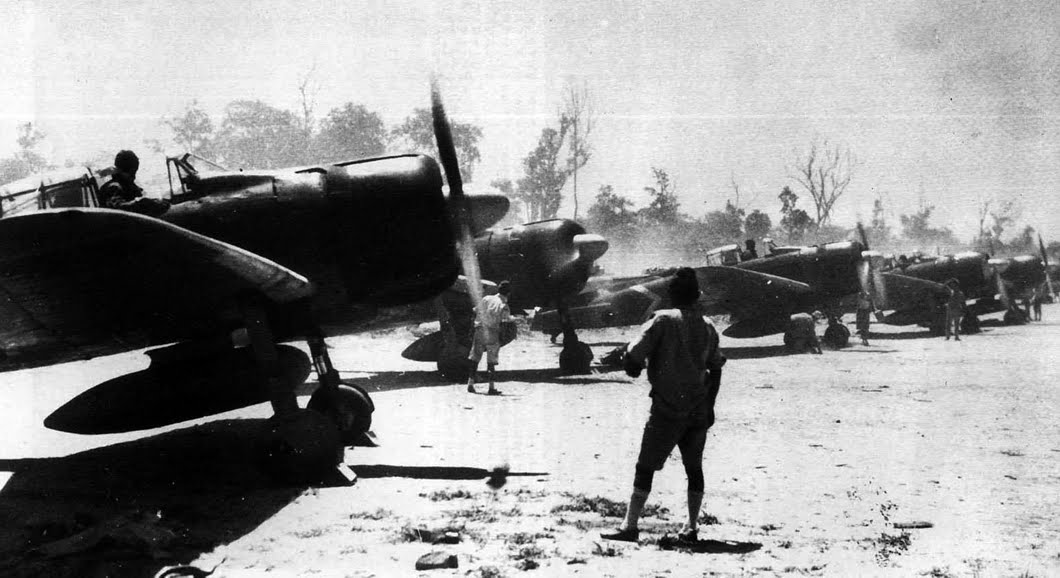
Zuikaku Zeros at Rabaul
During the South Pacific Command air campaign against Rabaul mid-December 1943 to mid-February 1944. Interesting data came into U.S. hands. While the data relates to the overall effort and is not specific to the Hellcat, it is revealing since the Hellcat had a key role in the campaign. Allied intelligence obtained Japanese messages detailing their losses for the period 1 to 15 January. During the period the Japanese lost forty-four aircraft in air combat. American claims during the same period were 193 (4.4 times exaggerated). For fighters the figures were thirty lost, one hundred thirty claimed (5.6 times exaggerated). According to Admiral Nimitz monthly report for December 1943 of the F6F’s operating in the South Pacific during 1943 (September to December) thirty-five were lost for 170 enemy aircraft claimed shot down. This yields a combat ratio of 4.9:1. Interestingly this is close to the data from F6F operations in September 1943 as well as the consolidated data from January 1944. Overall this suggests the Hellcat was generally breaking even in combat versus the Zero rather than outscoring them by five to one.
That overclaiming was occurring was recognized even if not to its full extent and even if little was done to contain it. In his monthly report for March 1944 Admiral Nimitz discussed the tactical ratio of kills to losses in three carrier actions in February and March. He wrote that even if the ratio indicated “is 3 times as high as the full facts would justify, the superiority of our planes, pilots and tactics is apparent.” The Hellcat was the primary aircraft racking up claims. The Hellcat to some extent shines in the reflected glow of superior pilot experience and better tactics.
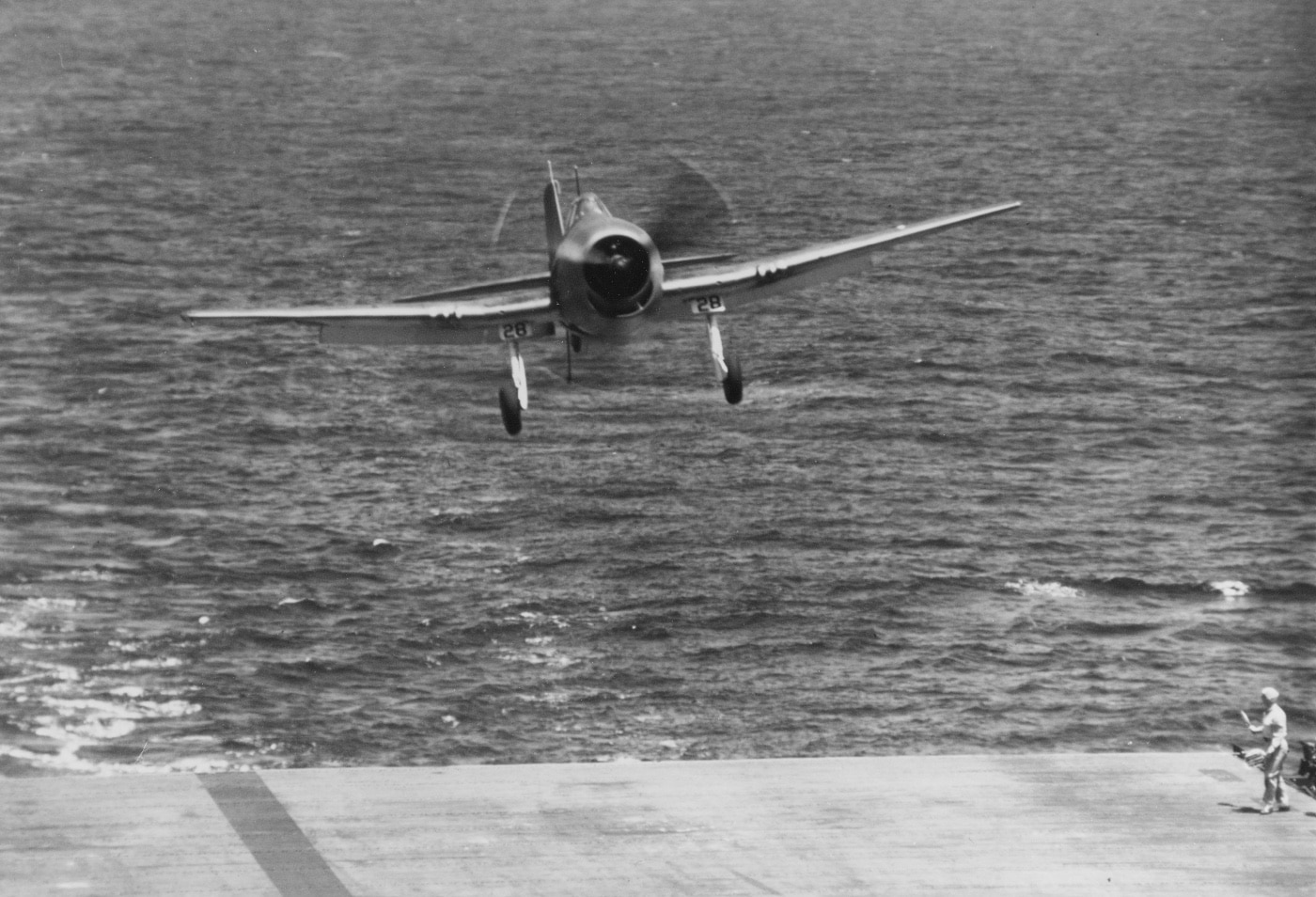
Hellcat carrier landing
For an example of air combat claims involving the Hellcat as well as claims methodology later in the war see Part VII of the article Ten days to Kamikaze – Mass Attacks particularly the section Attack on Task Force 38. Additional insights come from Japanese pilots who did not necessarily have a single opinion about the Hellcat. A pilot of Air Group 221 in the Philippines who received minimal training before being thrust into combat in October 1944 and was captured after crashing during a transfer flight in December had this opinion of the Hellcat: “PW claimed that this airplane was superior to the Zeke 52 by reason of more powerful engine and superior fire power.” (Kazuo Shima, POW 51-J-8472). A pilot from the same air group was captured after being shot down by a P-38. He had better training and combat experience from mid-1944 including shared claims for three B-24s. Rating his Zero 52: “PW believed this airplane compared equally or even surpassed the Hellcat in performance, if piloted by experienced and first line pilots.” (Takahiko Hanada, POW 51-J-10249). Despite the difference of opinion there is no indication these pilots considered the Hellcat, even late war models with water-injected engines, a super fighter.
Addendum
In the early months of 1943 Japan adopted a defensive strategy to maintain their “southern resource area” and security zone acquired in previous operations. Soon thereafter they began preparations to thwart perceived Allied plans for strategic offensive operations. Among Japanese plans was one to create a large mobile land based naval air force to defend against incursions across the central Pacific from the east or south. It also became an imperative to maintain and strengthen Japan’s carrier air power. These two efforts (1) creating a new land based air fleet and (2) rebuilding their carrier air groups in addition to all their other operational commitments overloaded their pilot training system. The attempt (never achieved) to produce 30,000 pilots a year resulted in a serious erosion in average combat pilot quality. That helped make Grumman Hellcats appear to be super fighters in some eyes. As might be expected the Japanese navy approach to pilot acquisition and training played a role in the decline. Each of these factors is briefly outlined below.
First Air Fleet
The land based First Air Fleet (not to be confused the with the aircraft carrier organization that attacked Hawaii) was established in July 1943. It was to consist of three giant Air Flotillas. The first of these to be established, the 61st, was slated for eleven large air groups (Kokutai). It was anticipated it would take a year for the 61st to be fully organized, equipped and trained. By November 1943 nine of the eleven Air Groups had been established and were in training. Among these were five fighter air groups. Three were equipped with Type Zero carrier fighters, one with the new Shiden interceptor, and one with night fighters. Fighter air group establishment initially was set at thirty-six aircraft but quickly increased to seventy-two and more later. The invasion of Kwajalein in the Marshall Islands on 1 February 1944 resulted in a Combined Fleet order for the 61st Air Flotilla to deploy to the Marianas and other islands in the Pacific. Air Group 261, the earliest and best trained Zero air group established, deployed to Iwo Jima by mid-February 1944. Only eighteen of its seventy pilots were fully qualified (A-rating). Some units had no A rated pilots. The initial deployment of the units of the 61st Air Flotilla numbered about five hundred aircraft many manned by pilots and air crew that were only partially trained. The first hundred or so 61st Air Flotilla planes to reach Saipan in February were subjected to American carrier based air attacks and most were lost in air combat or on the ground. Air Group No. 265 was on Formosa in February 1944 having been sent there due to overcrowding of training bases in Japan. It was seriously under strength and most of its fighters were Zero 21s.
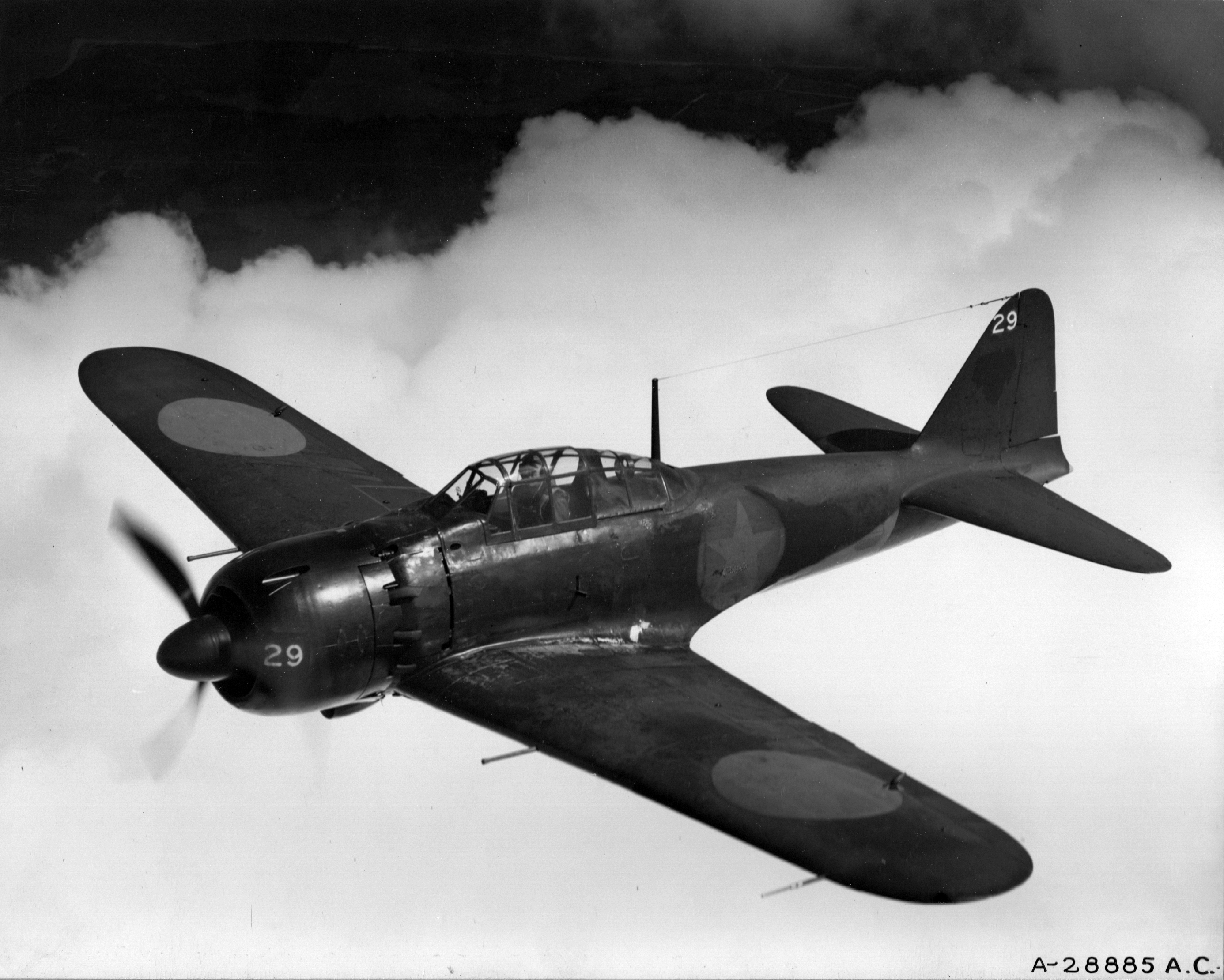
Captured Zero 52
Carrier air groups
During the course of 1943 there were no battles involving aircraft carriers on both sides as there had been in 1942. However, from early 1943 to early 1944 Japanese carrier air groups engaged in combat operations from land bases on seven occasions. Some of these deployments involved a single air group and were of short duration with relatively few casualties. In others heavy losses were sustained. Air groups of the 2nd Carrier Division operated from the Solomons throughout July and August 1943. They suffered casualties and upon withdrawal many of their remaining planes and pilots were assigned to land based air groups. The division had to be completely rebuilt. The rebuilt 2nd Carrier Division deployed to Rabaul in January 1944 for several weeks of intense combat during which it suffered heavy losses. Once again upon withdrawal it had to be completely rebuilt. The 1st Carrier Division suffered heavy losses during a deployment to Rabaul in November 1943 and also suffered losses as result of a deployment there a month later. It too had to be completely rebuilt. New carrier air groups were required for converted light and escort carriers that were added to the fleet in 1944. New air crews were required in all these cases.
Pilot training
Japanese navy pilots came from three primary sources. Sailors from the fleet were given a couple months orientation before entering flight training. Youths who had completed an elementary education were given lengthy training (a year or longer) which was a combination of middle school subjects, basic military training and aviation subjects. Officer pilots mainly regular officers graduates of the naval academy were a small minority. In addition there were smaller numbers of reserve officers, promoted aviation non-commissioned officers or college graduate aviation cadets. Japanese policy which encouraged college students to remain in school and graduate changed in July 1943. College students were then expected to volunteer for military service. For naval aviation after brief orientation students entered flight training. Just months later they were entering combat units. The rapid expansion of training encountered a shortage of training bases, shortage of trainer aircraft, and a shortage of instructors. Various solutions were extemporized. One problem could not be overcome. Recent flight training graduates were adequate as instructors for basic flight training. However, effective operational training required experienced pilots particularly pilots with combat experience. The operational training units had already been culled of overage instructors who were needed to fill leaderships roles in combat units. In addition to pilot categories of A, B, and C a new D category was added. D pilots were trainees sent to combat units who had never completed operational training. Missing skills were gunnery, night flying, high altitude flights, and tactics. From early 1944 these pilots were often thrust into combat having acquired little of the necessary training in their combat units. Hellcat pilots met these pilots over the Marianas, Ponape, and Truk in early 1944 and later in the Battle of the Philippine Sea.

Excellent analysis!